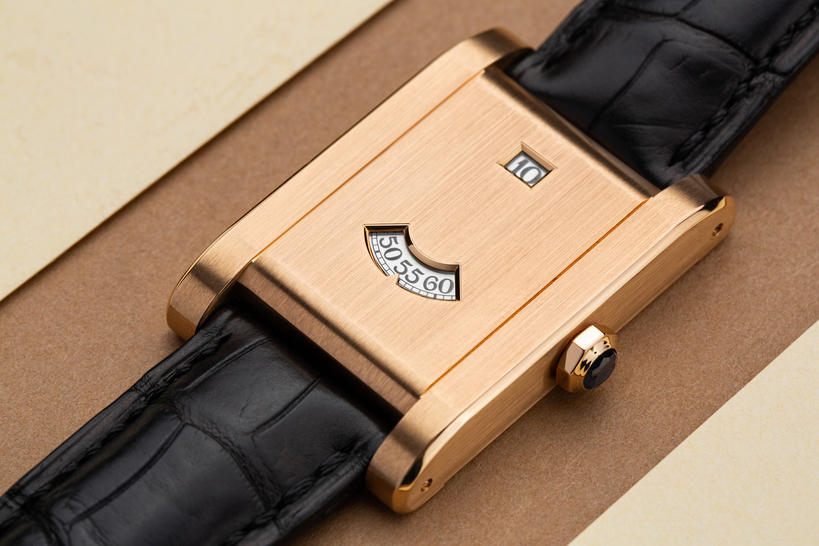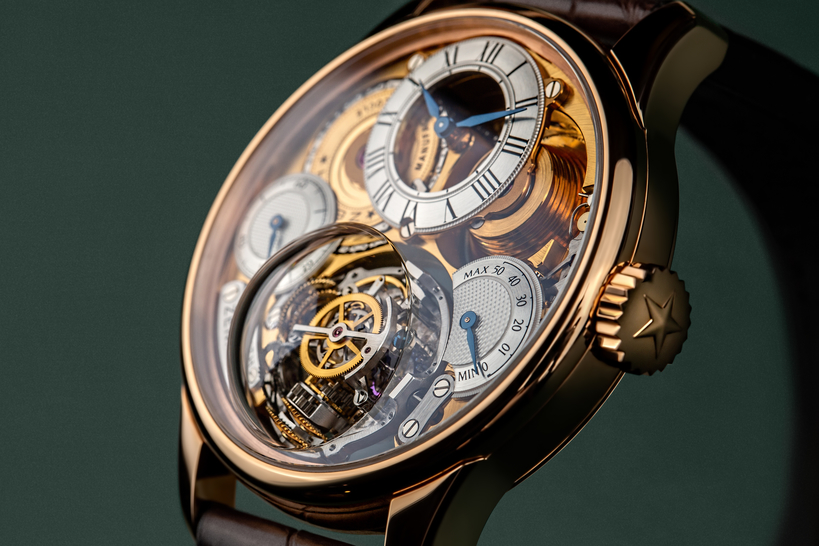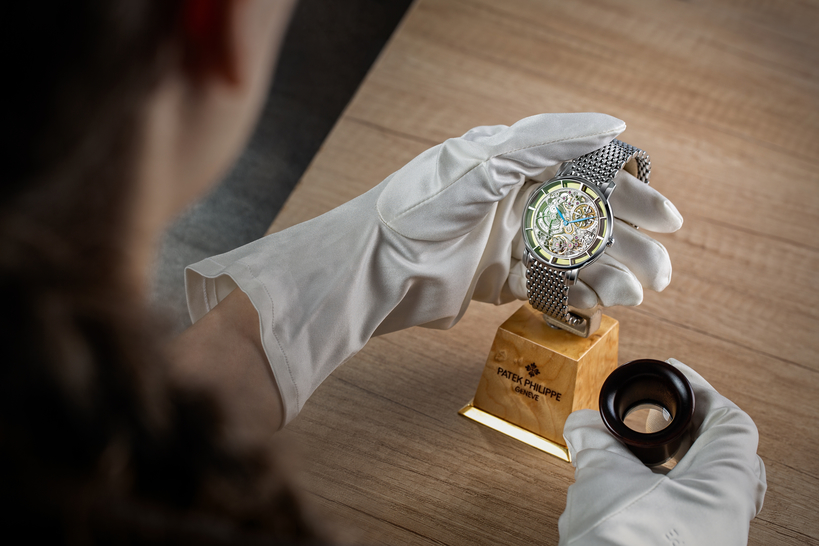Why are devices that time the duration of two processes starting at the same instant so popular?
A stopwatch attached onto or built into an ordinary watch movement can help time the duration of all sorts of processes. Chronographs are used by pilots as an additional tool to monitor flight duration, as well as by horse racing enthusiasts, chefs and other people with a passion for a variety of fascinating activities that run against the clock.
With the relevant scales on the periphery of its dial, a chronograph can help record heart rates, traveling speed, the fuel consumption rate, the distance to a storm front and take many more measurements. To gain a deeper understanding of how complex chronographs are, there are two types of construction.
They can be modular, where an independent stopwatch unit is attached and connected to an existing base watch movement. They can also be integrated into the movement, in which case the movement is planned with a stopwatch from the outset. The latter is of course far more reliable and much neater.
Chronographs can also be differentiated by the way they engage with the watch movement (clutch type). Classic chronographs are engaged and controlled by a column wheel. A cam-actuated system is much simpler yet no less reliable.
Classic chronographs are engaged and controlled by a column wheel.
There are also wristwatch stopwatches capable of timing the duration of two processes that begin simultaneously — split-seconds chronographs are considered a complication of the highest order.
At the very least, this is because an additional sweep seconds wheel and column wheel have to be fitted in order to drive a second sweep hand to split the chronograph's work, not to mention the tricky system of levers which link up with the additional hand and its pusher.
Monopusher chronographs, where all functions are activated by pressing one pusher three times to sequentially "start – stop – reset", are made less often than the ordinary ones. They’re either made as a mark of respect for traditional watchmaking or to achieve design objectives.
So up until recently, the majority of split-seconds chronographs were essentially controlled by one pusher, and the additional split-seconds pusher was disguised as a second "reset" pusher. And it's only been relatively recently that manufacturers have deliberately begun fitting a split-seconds pusher on the opposite side of the case at 8 o'clock or 10 o'clock to let you know it’s no ordinary chronograph and you're looking at a split-seconds chronograph.
Like all chronographs, split-seconds chronographs appeared thanks to the demand from avid fans of equestrian sports. These people were very eager to record timings at a glance, such as the difference in speed between two favorite racehorses during warm-ups when mounted or unmounted.
Some believe this is precisely the reason why the duration of split-seconds chronographs was limited to only one minute until 2004, when a remarkable model appeared: A. Lange & Söhne Double Split.
The difference between the results of the two favorite racehorses surely couldn't be any greater than that! But there's actually a much simpler explanation — it was most likely the unbelievable complexity of adding another hand to the split-seconds one for the minutes.
Split-seconds chronographs appeared thanks to the demand from avid fans of equestrian sports.
This only became possible with the appearance of new miracle alloys and powerful supercomputers capable of calculating the operating cycle of the chronograph module for minutes. The first split-seconds modules were fitted in pocket watches around the 1880s.
The most common split-second mechanisms were probably ones in Swiss Venus movements. Another well-known movement manufacturer called Valjoux later began producing split-seconds chronographs. The first rattrapante chronograph wristwatch was unveiled by none other than the great Patek Philippe.
The model was launched in 1923 with a white enamel dial and was given the same number 124824 for its movement and the 30-mm case in yellow gold. Its dial and the fact that the piece was a monopusher split-seconds chronograph made the watch unique.
It resurfaced when it was first sold at an Antiquorum auction in 1999 for the neat sum of CHF 3,000,000, becoming history's most expensive wristwatch. Patek Philippe actually paid CHF 1,000,000 recently to borrow the watch from its owner for a few years and exhibit the first split-seconds chronograph at various exhibitions and the Patek Philippe Museum in Geneva.
By the way, the manufacturer of the base movement used in this watch remains unknown. All we know is that Patek Philippe only proudly announced their first fully in-house chronograph movement in the watchmaker's history at Baselworld 2005. The Ref. 5959P split-seconds chronograph in a round platinum case was introduced housing the CHR 27-525 PS movement.
The next split-seconds chronograph was the Patek Philippe Ref. 5950 launched in 2010, equipped with the same movement with a monopusher split-seconds chronograph module.
And this first manufacture movement by Patek happened to be similar in functionality to the basic monopusher version of the well-known Valjoux 55 VBR.
Patek Philippe proudly announced their first fully in-house chronograph movement at Baselworld 2005.
None other than Rolex had already experimented with it back in 1942, when twelve Rolex 4113 split-seconds models were introduced in steel cases measuring 44 mm.
Patek Philippe provided a two-pusher split-seconds chronograph in 2015, when manufacture caliber CHR 29-535 PS debuted in the Ref. 5370P model.
Patek Philippe's main competitor Vacheron Constantin also developed their own split-seconds chronograph movement called Caliber 3500 in 2015. It was first presented in the Harmony Ultra-Thin Grande Complication Chronograph.
A model limited to 10 pieces was earned the title of the world's thinnest self-winding monopusher split-seconds chronograph thanks to its movement measuring 5.2 mm in height.
A stunningly elegant watch with a very long name was presented last year based on this movement: Vacheron Constantin Traditionnelle Split-Seconds Chronograph Ultra-Thin Collection Excellence Platine.
Just fifteen of these models were released, each priced at USD 288,000. And this is a very serious competitor for Patek Philippe's 5370P, which costs USD 274,410. The split-seconds chronograph module remained unchanged for quite a long time due to the complexity of making and decorating them.
The first substantial update was presented by IWC in 1992 in their Pilot's Watch Doppelchronograph model. Watchmaker Richard Habring modernized the good old module when he designed the IWC Doppelchronograph based on the ETA (Valjoux) 7750 chronograph caliber.
Vacheron Constantin developed their own split-seconds chronograph movement called Caliber 3500 in 2015.
The split-second mechanism had been fitted with two controlling column wheels until Habring decided to top the typical chronograph with a lever-and-cam system. Not only did he simplify the device significantly in doing so, he also increased its reliability. Earlier split-seconds chronographs would often go out of sync not only as a result of impact but also due to the pusher not being pushed in fully.
In these cases, the brakes around the center wheel might open or close prematurely and prevent the movement from working properly with the column wheel stuck at a halfway position. Habring's additional pusher for the split-seconds mechanism was placed at 10 o'clock.
Twenty years later, when Richard Habring had already founded his own company called Habring², he doubled up on his success in the Habring² Doppel 2.0.
Thanks to this model, he received the prize for Sports Watch of the Year at Grand Prix d'Horlogerie de Genève (GPHG), and he shocked the world of watchmaking with his retail price while he was at it. All he wanted for his remarkable split-seconds chronograph was CHF 7,250!
However, the most radical and even historic refinement of the split-seconds chronograph can be attributed to the Saxon watchmaker A. Lange & Söhne. They unveiled the Double Split in 2004: the world's first double rattrapante chronograph, i.e. it had an added 30-minute rattrapante counter.
Its case measured 43.2 mm in diameter and 15.3 mm in height. Then came its logical progression called Triple Split in 2018: a model with an additional 12-hour counter in a case which also measured 43.2 mm in diameter with an increase in height of just 0.3 mm to 15.6 mm!
The Double Split still disappoints in terms of profit. It retailed for around USD 100,000. The watch resurfaces at auctions on a regular basis but its price range fluctuates around the mark of USD 70,000.
The Triple Split has displayed far better results, which was limited to 100 pieces with price at launch of USD 147,000. It has yet to appear at large auctions, while its sales price has already exceeded the mark of USD 230,000 in unofficial online auctions held just recently.
All in all, success has been shown by "pure" split-seconds chronographs (without the likes of any added minute repeaters, calendars or tourbillons) by Patek Philippe, Vacheron Constantin, A. Lange & Söhne and F.P. Journe. It's safe to say there's a decent future for mechanical double chronographs. As always, the rest will follow the leaders.

















